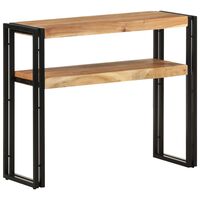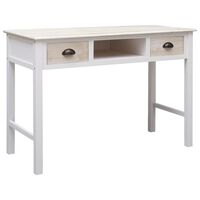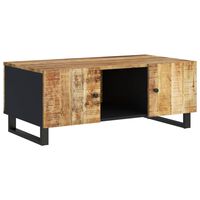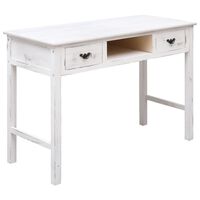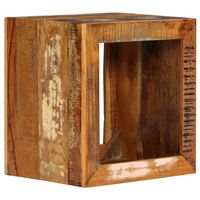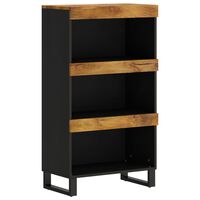In interior design, wooden tables have a storied history and hold a significant place. Originating from ancient civilisations, these pieces of furniture have evolved over centuries, showcasing the craftsmanship and aesthetic sensibilities of different eras.
Read more Read less
Today, they continue to be an integral part of interior design due to their versatility, durability, and timeless appeal. Wooden tables not only serve a functional purpose but also contribute to the overall aesthetic and ambience of a space. This outline aims to delve into the various types of wooden tables, their construction methods, and maintenance practices.
By understanding these aspects, one can appreciate the artistry involved in creating these pieces and make informed choices while incorporating them into their design schemes. Whether it is a rustic oak dining table or a sleek walnut coffee table, each piece tells a story, adding character and warmth to a home.
The Variety and Versatility of Wooden Tables
Wooden tables are a timeless addition to any home or office, offering not just functionality but also a significant aesthetic appeal. The versatility of wood as a material allows for a vast array of table types, each serving a unique purpose and catering to different style preferences.
Under the category of function-based wooden tables, we find dining tables, coffee tables, side tables, and console tables. Dining tables, usually the centrepiece of a dining room, are where families gather to share meals. They come in various sizes to accommodate different family sizes and dining spaces. Coffee tables, on the other hand, are smaller, lower tables designed to stand in the living room, often in front of a sofa, to hold items like beverages, magazines, and decorative pieces. Side tables, also known as end tables, are small, handy pieces of furniture that can be placed next to a chair or sofa, providing a convenient spot for lamps, books, or drinks. Lastly, console tables are narrow, typically rectangular tables designed to be placed against a wall or in a hallway.
When it comes to style, wooden tables can be broadly classified into traditional, modern, rustic, and custom-made. Traditional wooden tables often feature ornate designs, intricate carvings, and a rich, polished finish, exuding warmth and elegance.
Modern wooden tables, meanwhile, showcase sleek lines and minimalist designs and often incorporate elements of metal or glass. Rustic wooden tables are all about raw, natural beauty, with rugged textures, visible wood grains, and a distressed finish to give a feel of the outdoors. Custom-made tables offer the most flexibility, allowing you to tailor the design, size, and finish to your specific needs and preferences.
In conclusion, wooden tables, with their array of types and styles, offer endless possibilities to enhance your living or working space. Whether you're looking for a table that serves a particular function or one that aligns with your style, there's a wooden table out there that's perfect for you.
Navigating the Maze of Wood Selection for Your Perfect Table
Selecting the right type of wood for your table is a crucial decision that can significantly influence its longevity, appeal, and functionality. The wood varieties frequently used for tables include Oak, Maple, Walnut, Cherry, and Mahogany. Each of these woods has unique characteristics that make them suitable for different styles and purposes.
Oak, renowned for its exceptional durability and pronounced grain, is ideal for heavy-duty tables. Maple, on the other hand, is a popular choice for modern, minimalist tables due to its light colour and subtle grain pattern. Walnut, with its rich, dark hues and straight grain, lends an air of elegance to any room. Cherry is often chosen for its smooth texture and warm, reddish-brown colour that deepens with age, giving the table a timeless appeal. Mahogany, a luxury hardwood, is prized for its reddish-brown colour, straight grain, and excellent durability.
Choosing the right wood involves considering several factors. Durability is paramount if the table will be used frequently or subjected to heavy loads. The grain pattern can also significantly affect the table's aesthetic appeal, with some preferring the pronounced, intricate patterns of Oak and Walnut, while others favour the subtlety of Maple. The colour of the wood can either complement or contrast with the room's décor, and it's essential to choose a shade that aligns with your aesthetic preferences.
In conclusion, the process of wood selection for tables involves a careful balance of practicality and aesthetics. A well-chosen table can become a centrepiece, serving its purpose while adding charm and character to your space.
The Art of Table Design: Material, Structure, and Functionality
The craft of table design is a delicate balance between aesthetics, functionality, and material choice. In terms of tabletop designs, solid wood tops are a classic choice, exuding timeless appeal and durability. Veneer tops, on the other hand, offer a more economical option, combining thin layers of quality wood to create a visually pleasing surface. Glass inlays provide a modern touch, allowing for intricate designs and a sense of openness.
Moving down to the table's foundation, leg and base designs significantly impact the overall look and stability of the piece. Tapered legs, with their narrowing design, offer a sleek, minimalist appeal. Cabriole legs, with their distinct, curved shape, add an element of elegance and sophistication. Pedestal bases, meanwhile, provide a sturdy base and a unique aesthetic, often becoming the focal point of the design.
Lastly, incorporating storage into table design merges functionality with style. Drawers and shelves can be subtly integrated into the design, providing practical storage solutions without compromising the table's aesthetic appeal. Whether for a dining table, coffee table, or bedside table, these design considerations ensure a perfect blend of form and function.
A Guide to Wooden Table Maintenance
Preserving the beauty and longevity of your furniture requires a dedicated approach towards maintenance and care. Regular cleaning and dusting can prevent the accumulation of dust and grime that can dull the appearance of your pieces.
Polishing and restoration, when done correctly, can rejuvenate your furniture, restoring its original lustre and charm. It's also essential to protect your furniture from potential damage caused by moisture and heat, which can warp and discolour the material. Lastly, don't overlook the importance of promptly repairing scratches and dents.
These seemingly minor imperfections can significantly detract from the overall aesthetic of your furniture and, if left untreated, can lead to more severe damage over time. By adhering to these care tips, you can ensure your furniture remains in excellent condition, enhancing the overall appeal of your home.
Anticipating the Future: Trends and Innovations in Wooden Table Design and Manufacturing
In conclusion, the wooden table design and manufacturing industry has seen a significant evolution over the years, with key points such as sustainability, craftsmanship, and technology-driven design shaping its course.
As we look towards the future, we anticipate several trends that will further redefine this space. There will be a stronger emphasis on eco-friendly practices, with manufacturers sourcing wood from sustainable forests and adopting energy-efficient production methods. Also, we foresee a resurgence of traditional craftsmanship as consumers increasingly value the uniqueness and quality of handcrafted tables. Check out our shop-by-room guide for your wooden tables.














































